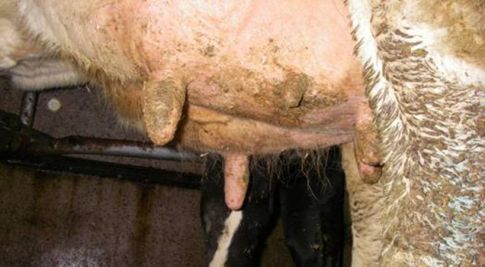Mastitis diagnosis by PCR as an aid to the responsible use of antibiotics.

This month, Paul Daly BSc PhD BVMS MRCVS of Westpoint Veterinary Group, discusses mastitis diagnosis by PCR. Clinical mastitis in dairy cows has a substantial impact on farm economics, milk quality and cow welfare. Early mastitis detection procedures can enhance cure rates and, when coupled with appropriate antibiotic therapy, can also reduce the time required to return to normal milk. Antibiotic selection on most dairy farms is based on past experience and performance and is usually based on what resulted in a clinical cure.
However, there is now growing concern about antibiotic use because of the potential for resistance and drug residues. The goal should not be to avoid antibiotics, but to avoid unjustified, unnecessary, or inappropriate antibiotic use.
This can be achieved as follows:
- Identify which pathogens are responsible for clinical mastitis in the herd.
- Choose appropriate antibiotics that target the bacteria causing mastitis
- Carefully select cows for antibiotic treatment.
- Initiate treatment promptly
How to identify the pathogens responsible?
Clinical signs alone are not sufficient to determine which pathogens cause a case of mastitis. For example; a cow with a swollen mammary gland and clots in the milk might be infected with Streptococcus uberis, Escherichia coli, Staphylococcus aureus, Mycoplasma bovis or a number of other pathogens. Therefore it is important to determine the pathogens most frequently responsible for mastitis in each herd so that appropriate treatment and prevention recommendations can be made.
Identifying mastitis pathogens is traditionally undertaken through bacteriology, where the sample is grown in the laboratory. Bacteriology is still an important tool, especially in looking for the potential mastitis pathogens in a bulk tank milk sample. A recent drive to improve mastitis management has highlighted the need for a fast, accurate and convenient method of mastitis detection. Recently a new system of identifying the bacteria present in milk has become available. This is called PCR (Polymerase Chain Reaction) and uses the latest diagnostic equipment to detect bacterial DNA in the milk sample.
What is the advantage of PCR?
- Mastitis causing bacteria are identified by amplifying the bacterial DNA – this allows a more rapid diagnosis.
- DNA amplification technology allows identification of viable, dead, and also growth-inhibited bacteria.
- Decrease the number of “no growth” results (a common problem occurring with the conventional bacterial culture) and PCR also detects organisms, such as Mycoplasma bovis, which are difficult to culture.
- PCR can be used to monitor the rate of infection at the farm level.
Westpoint Veterinary Group currently uses MASTIKIT, a new laboratory service where milk samples will be analysed using PCR. The kit includes everything the dairy farmer needs to collect 6 individual milk samples, including individual wipes, gloves and postage-paid packaging.
How to choose the correct antibiotic for treating mastitis
As a golden rule to maximise the chance of bacteriological cure producers must select the correct antibiotic, at the correct dosage, for an effective treatment period. It is important to understand that antibiotics differ in their efficacy towards various bacteria and the time they stay in the udder; by identifying the mastitis pathogen by culture or PCR it is possible to make targeted treatment decisions. Producers should work with their veterinary surgeons to ensure they are using the correct antibiotics for the pathogens commonly seen on their farms.
Carefully select cows for antibiotic treatment.
Some pathogens can be eliminated from the lactating cow by antibiotic treatment while others are less responsive to therapy. There is a body of opinion that suggests that treatment of Staphylococus aureus infections may not be worthwhile. Chronically infected cows usually respond poorly to therapy during lactation due to deep-seated infection. However, Staph aureus infection can be treated effectively if detected early. Removing cows with chronic or repeated infections will reduce the BTSCC and decrease the spread of contagious mastitis within the herd.

Initiate treatment promptly
Early and aggressive treatment is economic and results in a more effective response. A delay in treatment can allow potential pathogens, such as Streptococcus uberis and Staphylococcus aureus, to become well established and evade treatment and host defences. It is necessary to examine milk before each milking to prevent mild clinical mastitis cases going undetected.
Summary:
It is time to critically evaluate clinical mastitis treatment practices on dairy farms, identify reasons for treatment failures, and make evidence-based treatment recommendations. Current concerns over antibiotic resistance may lead to changes at a National or European level which could limit the drugs we are able to use on farm. Evidence-based decisions for antimicrobial use will require culture and PCR data to support the producer’s selection of antibiotic.
- 9th July 2012
